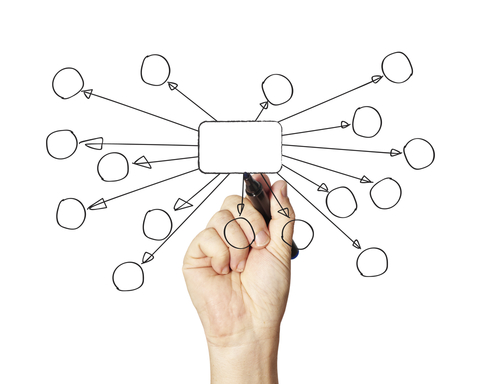The human body is a decentralized structure made of organs, sub-organs and sub-sub-organs, all the way to the cells, which themselves have their internal structure. The functionality of the body is pretty decentralized and no cell instructs other cells on what to do. Rather, each cell operates autonomously according to inputs it receives from its environment.
Now, imagine a company without a CEO or hierarchy. Imagine an organization that can essentially run on its own, without managerial supervision, completely autonomously, as if there were a CEO or managerial structure in place. Scary or brilliant?
What Is A ‘Decentralized Autonomous System?’
A ‘decentralized autonomous organization’ (or “DAO”), is a business or organization whose decisions are made electronically, strictly through written code (rules) or by vote of its members. It is a system of hard-coded rules that define which actions an organization will or will not take.
But, what’s the benefit of having a self-running or self-aware company? I mean, let’s face it, this isn’t Tony Stark we are talking about. The idea behind DAO companies is that the rules upon which a company functions are enforced digitally. Those decisions that aren’t hard-coded onto the blockchain platform are made and enforced by shareholders who control a certain amount of tokens or smart contracts.
Examples of rules include the amount of dividend payouts a company distributes, or whether or not a company will engage in or support a certain event.
The issues that DAOs currently face concern the participation of all shareholders as well as the ease of changing the code or a smart contract once it’s deployed in the blockchain. It’s a double-edged sword in that it’s a huge advantage that the code and smart contracts deployed are not easily manipulated or accessed, as this minimizes the risk of fraud and corruption, while at the same time, it makes debugging and changing the code extremely challenging and time-consuming. This challenge was illustrated by the failure of The DAO company, which was drained of all its funds by hackers who simply exploited a bug in the system.
We are now on a pathway that John Connor “once” tried to fix—self-aware technology and organizations, e.g., SkyNet.
What are DApps?
While there isn’t one standard fit-all definition for a ‘DApp’, it can best be described as an open-source, decentralized application that connects users and providers directly. There are three types of DApps: apps that manage money; apps that manage where money is involved, but requires another piece; and apps in the ‘other’ category, which includes voting and governance systems.
How Can a DAO be The Missing Link In The Blockchain?
DAOs are meant to provide a new method of scaling. One company, DAOstack, believes that by providing a toolkit comprised of a multitude of distinct but interoperable DAOs, it will allow for a harmonious ecosystem characterized by compatibility and functionality.
By homing in on three categories—decentralized collaboration, decentralized cooperation, and decentralized curation networks—the company believes that a DAO can be a successful model that the blockchain ecosystem can benefit from and thrive on.
“By providing an open, universal framework, comprised of smart contracts, collective value management, and DApps, we believe interests will be aligned and the result will produce a new web of open collaboration and interoperability among web companies,” says a representative of the company.
“Middlemen are everywhere in our economy; they are there to store records, for agreements over those records, and making decisions,” says Matan Field, the co-founder of DAOstack. These agreements need to sit somewhere, and one should not simply trust the record keeper. Decentralizing these records allows them to sit nowhere, but everywhere. Each computer stores a copy of that ledger, confirming the validity of that code copy.
“The whole magic of blockchain is the ability to maintain that consensus continuously,” says Field.
But, in the economy, we also rely on intermediaries to direct and coordinate—we need the CEO to run a company, the government to collect and distribute taxes, and a mayor to run a city. “As long as power is concentrated, there is unavoidable conflict of interest and great risk for failure,” says Field.
“Blockchain 1.0 was the ledger; Blockchain 2.0 is the network. So, what if we moved to Blockchain 3.0—decentralized governance. No company. No management. Self-organization.”

